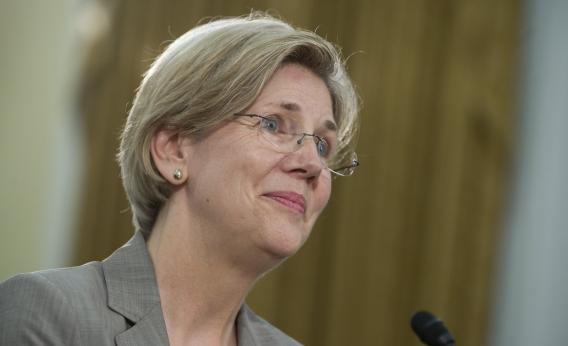Elizabeth Warren is out with an email to supporters arguing that the JP Morgan fiasco illustrates the need for a return to Glass-Steagall, which is semi-accurate shorthand for the idea that we should prevent depository institutions from also engaging in investment banking.
She mounts two arguments for this. One is that Glass-Steagall rules will help reduce the risk of “too big to fail” banks just mechanically in virtue of the fact that splitting institutions like JP Morgan into two different banks entails “making banks smaller.”
The second is the one that was the formal argument for Glass-Steagall in the first place, namely that we should “allow Wall Street to take risks, but not by dipping into the life savings and retirement accounts of regular people.”
The main problem with the first argument is Lehman Bros. You remember Lehman Bros, right? The investment bank that regulators decided wasn’t too big to fail, and so they let it fail? The stand-alone investment bank? The one whose failure brought about a large-scale financial panic that eventually persuaded Congress to pass TARP? That’s the one. Now there are two views you can have about Lehman. One is that Hank Paulson and Ben Bernanke did the right thing at the time, and then we went astray when we shifted into bailout mode. But in this view, there’s really no problem for Glass-Steagall to solve. If JP Morgan’s bad gambling brings the bank down then the FDIC makes sure depositors get their money, and the rest of the bank just goes bust. Alternatively, maybe Paulson and Bernanke did the wrong thing and it turns out we can’t put investment banks through the bankruptcy process because it’s too systemically chaotic. In that case, Glass-Steagall is irrelevant and what we really need is a new legislative mechanism for the resolution of investment banking enterprises. That’s what Dodd-Frank is supposed to do.
This all just backs in to the point that even though the phrase “too big to fail” has caught the public imagination, it’s never been clear that size is relevant. The point of bailouts is generally to prevent panics where insolvency at one institution leads to a liquidity crisis at many institutions. If you have a larger number of smaller institutions, it’s perhaps true that any given failure is less likely to spark panic but you’re also more likely to have failure.
